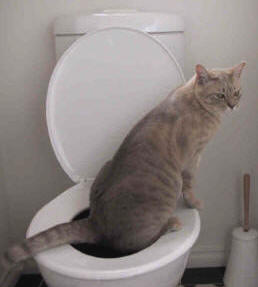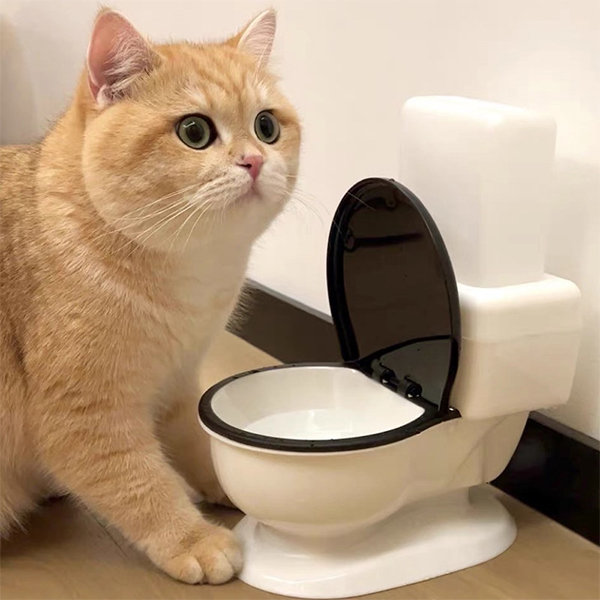An Outcomes of Flushing Animal Waste Down the Toilet
An Outcomes of Flushing Animal Waste Down the Toilet
Blog Article
We have discovered this great article on Don't Flush Your Pets Poo Down The Loo, Vet Warns listed below on the net and concluded it made good sense to write about it with you on this page.

When it comes to disposing of waste, particularly animal waste, many people usually resort to the practical choice of flushing it down the commode. However, this apparently simple service can have significant consequences for the setting and public health. In this write-up, we'll explore why flushing pet waste down the bathroom is a negative concept and supply alternate techniques for proper disposal.
Introduction
Proper waste disposal is crucial for keeping ecological sustainability and public health. While it might seem safe to flush animal waste down the toilet, it can result in various issues, both for the environment and human well-being.
Threats of flushing pet waste
Ecological influence
Purging animal waste introduces unsafe germs and pathogens right into rivers, which can adversely affect aquatic ecosystems. These pathogens can pollute water sources and damage aquatic life, disrupting fragile environments.
Public health worries
Animal waste has harmful microorganisms such as E. coli and Salmonella, which can pose significant health and wellness threats to humans. Flushing animal waste down the bathroom can contaminate water materials, bring about the spread of illness and infections.
Alternatives to flushing
Instead of flushing animal waste down the bathroom, there are a number of alternate disposal approaches that are extra eco-friendly and sanitary.
Composting
Composting pet waste is an environment-friendly method to deal with it. By composting, raw material is broken down into nutrient-rich soil, which can be made use of to fertilize yards and plants.
Landfill disposal
Disposing of animal waste in a land fill is another alternative. While not as eco-friendly as composting, it is a much safer option to flushing, as it avoids the contamination of water resources.
Animal garbage disposal systems
There are customized pet waste disposal systems offered that safely and hygienically take care of pet waste. These systems commonly use enzymes to break down waste and eliminate smells.
Actions to correct animal garbage disposal
To ensure proper disposal of animal waste, follow these actions:
Scooping and bagging waste
Routinely scoop and bag pet waste using eco-friendly bags. This avoids waste from infecting the environment.
Utilizing marked waste bins
Dispose of bagged pet waste in marked waste containers, such as garden compost containers or landfill containers. Stay clear of flushing it down the commode in any way prices.
Cleansing litter boxes and pet dog locations frequently
On a regular basis tidy can and pet dog areas to avoid the build-up of waste more info and bacteria. Use pet-safe cleansing products to maintain health.
Advantages of correct disposal methods
Taking on proper disposal approaches for pet waste provides several advantages:
Minimized environmental pollution
Appropriate disposal techniques minimize the danger of environmental pollution, securing rivers and ecosystems from contamination
Decreased danger of water contamination.
By avoiding flushing pet waste down the bathroom, the threat of water contamination is significantly minimized, protecting public health.
Boosted hygiene and health
Correct disposal techniques advertise much better sanitation and health, producing a much safer environment for both human beings and animals.
Final thought
In conclusion, flushing pet waste down the bathroom is hazardous to the setting and public health. By adopting different disposal techniques and complying with proper waste administration techniques, we can decrease the negative impact of animal waste and add to a cleaner, healthier earth.
What To Do With Dog Poo – The Do's And Don'ts Of Disposing Of Faeces
Dog poo bins
Some councils provide dedicated dog waste bins in popular dog-walking areas that can take dog poo that has been bagged but you can legally dispose of dog waste in any public litter bin, as long as it is securely bagged. This also applies to your wheelie bin at home.
Do not flush
Water companies do not recommend flushing dog faeces down the toilet because certain parasites can survive the water processing treatment and are potentially harmful to humans. You should also never consider flushing dog poo that has been bagged down the toilet as the bags will not break down and instead create severe blockages in the sewage system.
In the woods
The Forestry Commission promotes a ‘stick and flick’ method for dealing with waste in the woods. This means finding a stick and using it to flick any poo from off the path so that it is out of the way of other walkers. You could also bury it as long as it is not in an area where there might be livestock.
Livestock
Parasites found in dog poo can be transmitted to livestock if they inadvertently eat infected faeces that has been left on grazing land. This could result in the death of sheep or abortion in cattle so you should always make sure you pick up your dog’s waste in fields where livestock could be present.

On a regular basis tidy can and pet dog areas to avoid the build-up of waste more info and bacteria. Use pet-safe cleansing products to maintain health.
Advantages of correct disposal methods
Taking on proper disposal approaches for pet waste provides several advantages:
Minimized environmental pollution
Appropriate disposal techniques minimize the danger of environmental pollution, securing rivers and ecosystems from contamination
Decreased danger of water contamination.
By avoiding flushing pet waste down the bathroom, the threat of water contamination is significantly minimized, protecting public health.
Boosted hygiene and health
Correct disposal techniques advertise much better sanitation and health, producing a much safer environment for both human beings and animals.
Final thought
In conclusion, flushing pet waste down the bathroom is hazardous to the setting and public health. By adopting different disposal techniques and complying with proper waste administration techniques, we can decrease the negative impact of animal waste and add to a cleaner, healthier earth.
What To Do With Dog Poo – The Do's And Don'ts Of Disposing Of Faeces
Dog poo bins
Some councils provide dedicated dog waste bins in popular dog-walking areas that can take dog poo that has been bagged but you can legally dispose of dog waste in any public litter bin, as long as it is securely bagged. This also applies to your wheelie bin at home.
Do not flush
Water companies do not recommend flushing dog faeces down the toilet because certain parasites can survive the water processing treatment and are potentially harmful to humans. You should also never consider flushing dog poo that has been bagged down the toilet as the bags will not break down and instead create severe blockages in the sewage system.
In the woods
The Forestry Commission promotes a ‘stick and flick’ method for dealing with waste in the woods. This means finding a stick and using it to flick any poo from off the path so that it is out of the way of other walkers. You could also bury it as long as it is not in an area where there might be livestock.
Livestock
Parasites found in dog poo can be transmitted to livestock if they inadvertently eat infected faeces that has been left on grazing land. This could result in the death of sheep or abortion in cattle so you should always make sure you pick up your dog’s waste in fields where livestock could be present.

I stumbled upon that blog post on Why you should never flush dog poop down the toilet while scouting around the search engines. Enjoyed reading our piece of writing? Please quickly share it. Let someone else check it out. I appreciate your readership.
Call Report this page